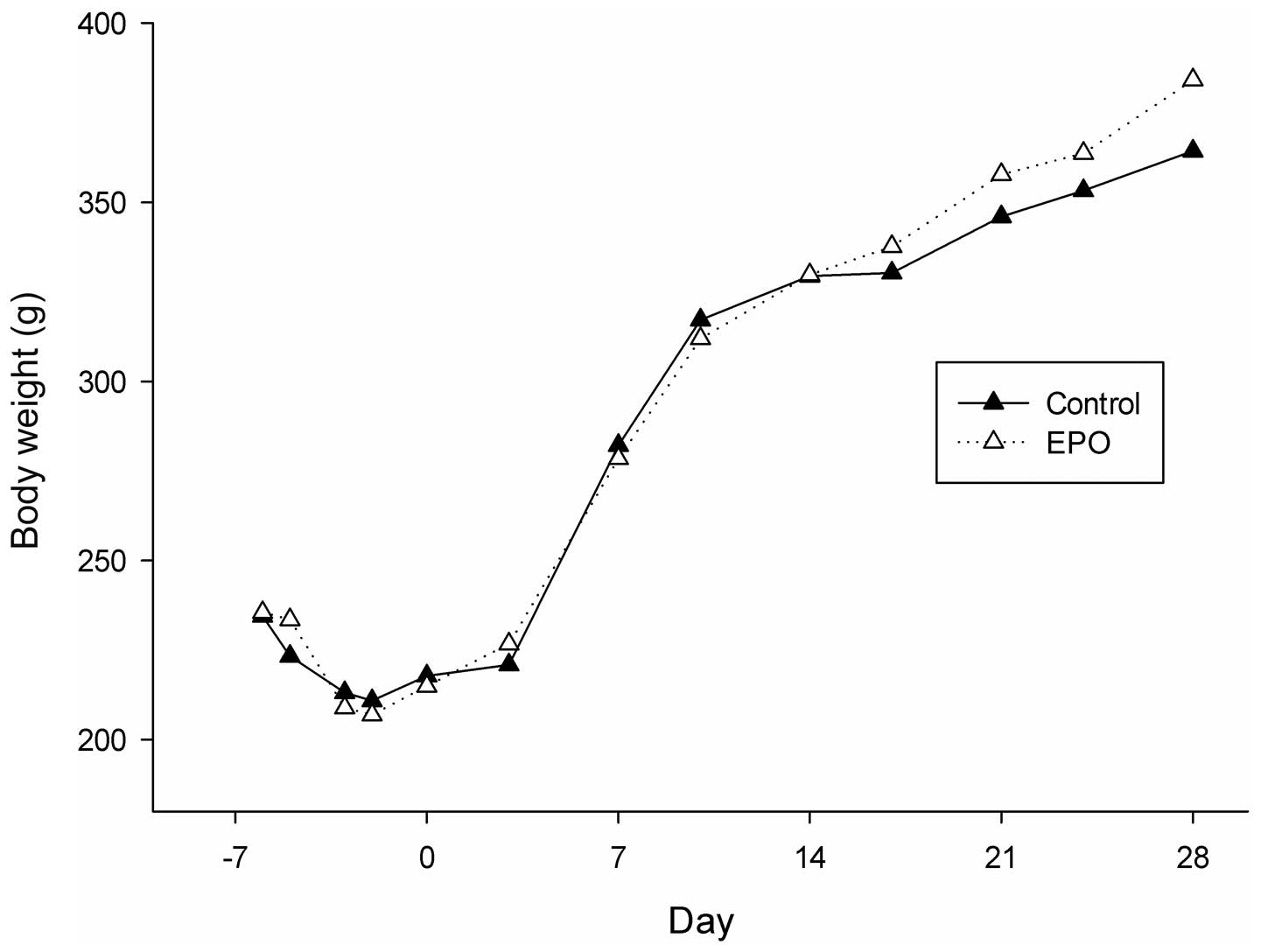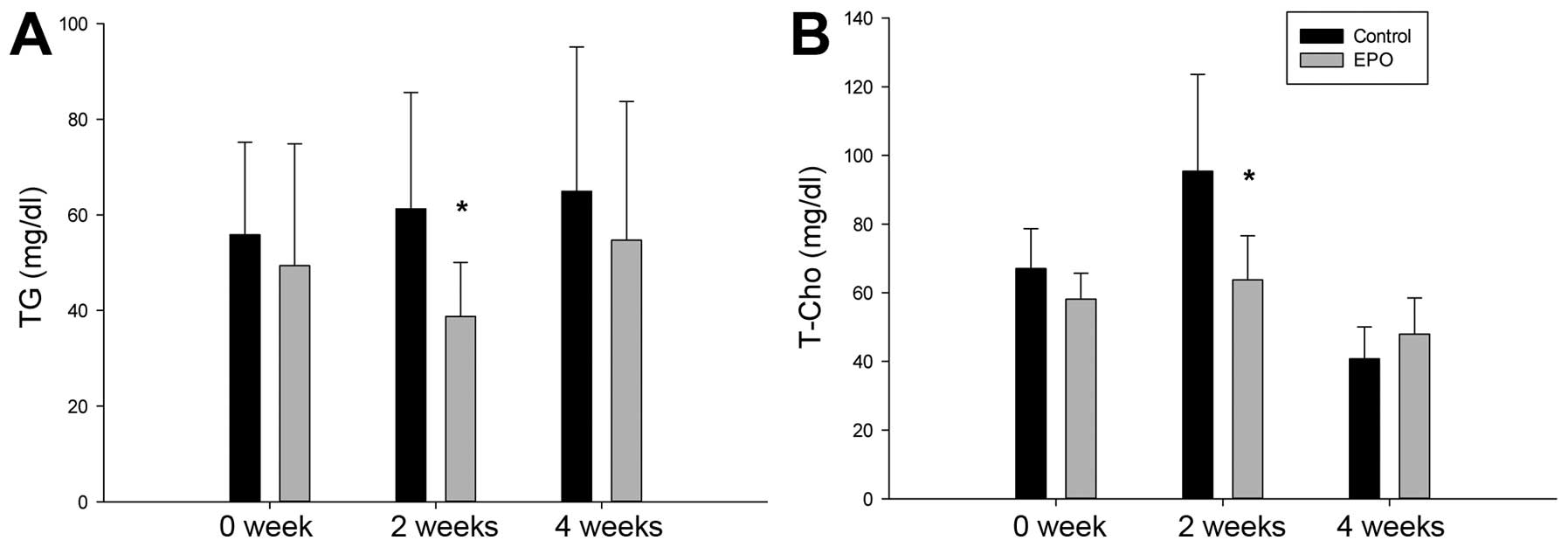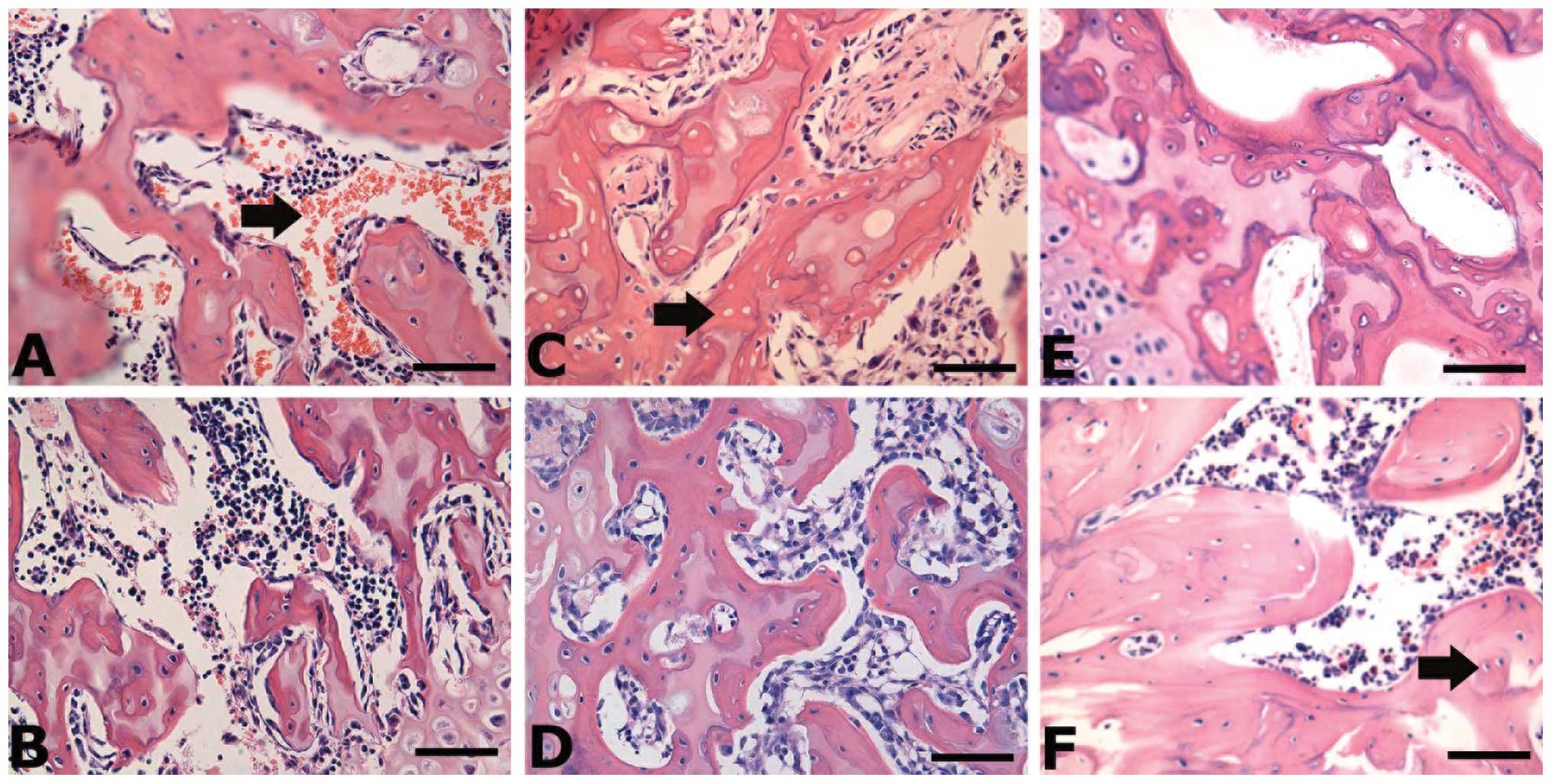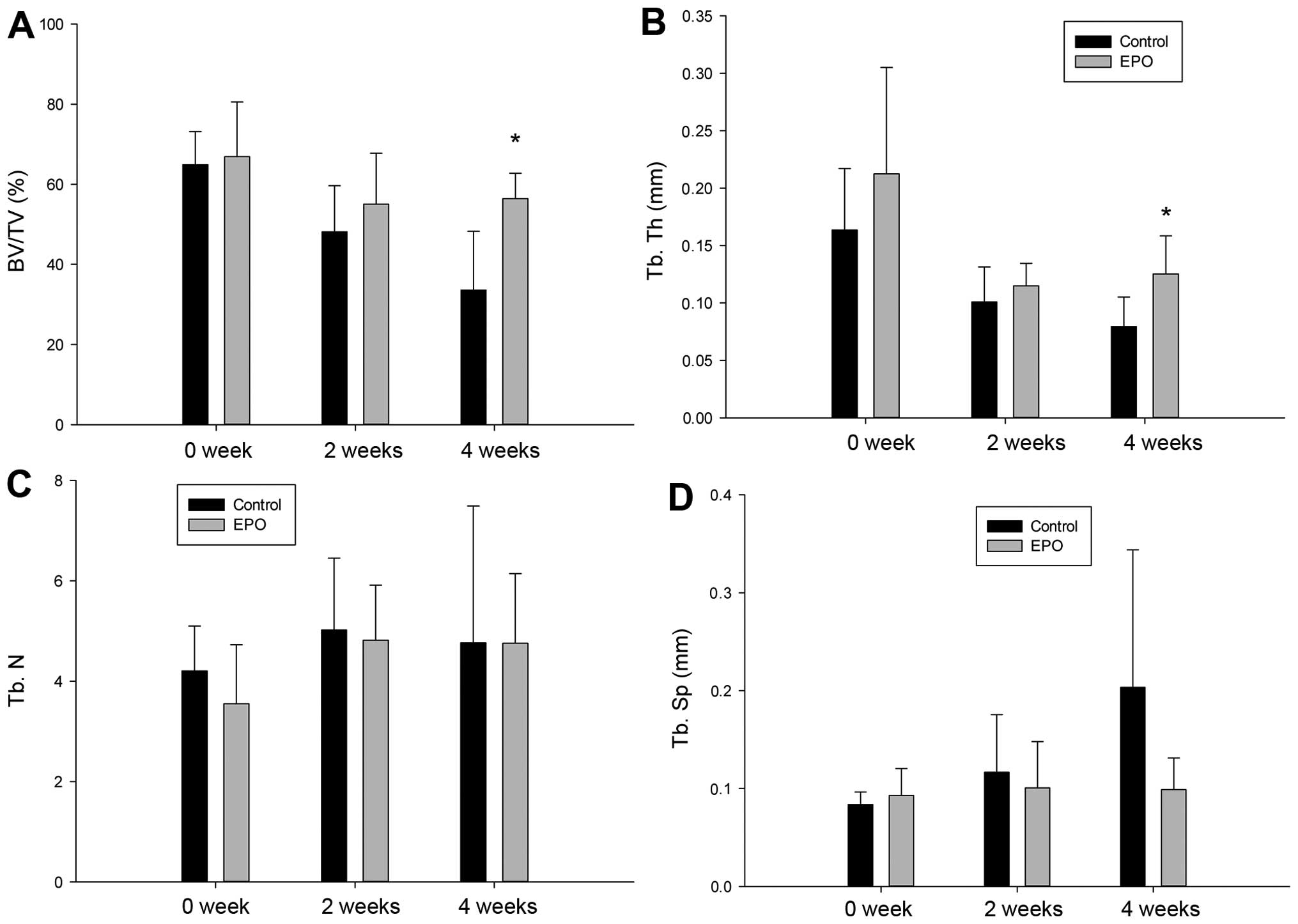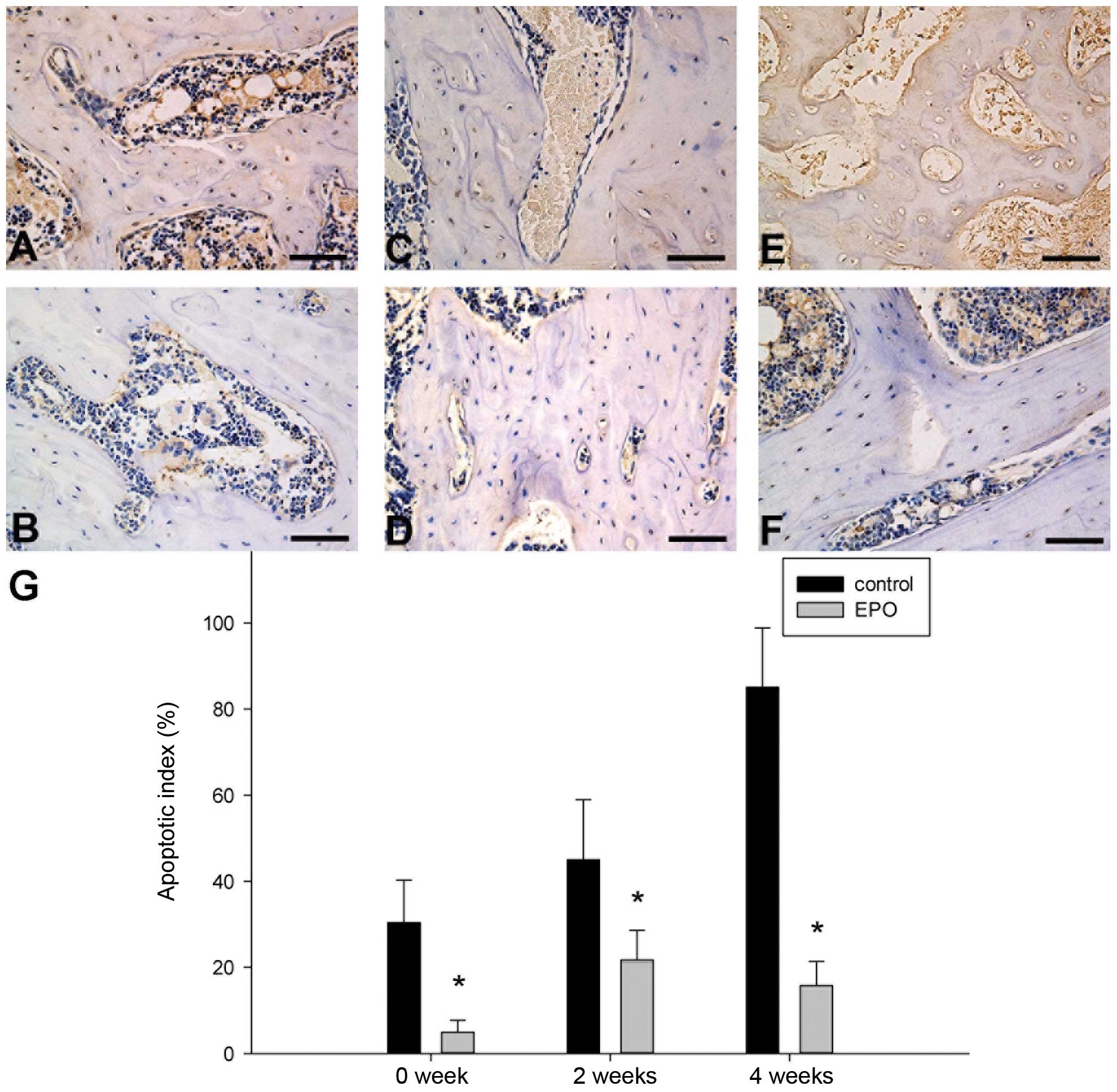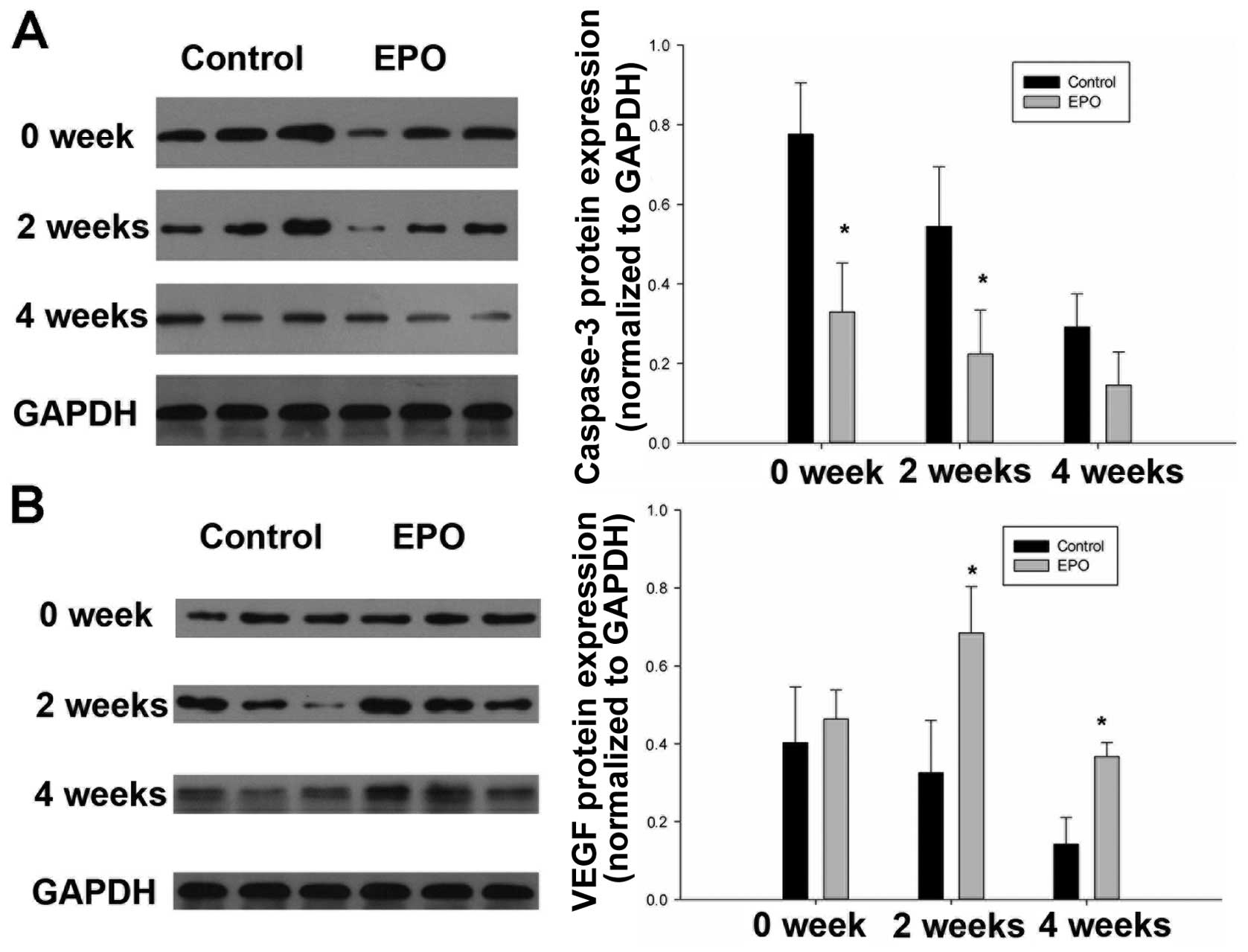|
1
|
Silvestrini G, Ballanti P, Patacchioli FR,
et al: Evaluation of apoptosis and the glucocorticoid receptor in
the cartilage growth plate and metaphyseal bone cells of rats after
high-dose treatment with corticosterone. Bone. 26:33–42. 2000.
View Article : Google Scholar : PubMed/NCBI
|
|
2
|
Weinstein RS, Nicholas RW and Manolagas
SC: Apoptosis of osteocytes in glucocorticoid-induced osteonecrosis
of the hip. J Clin Endocrinol Metab. 85:2907–2912. 2000.PubMed/NCBI
|
|
3
|
Calder JD, Pearse MF and Revell PA: The
extent of osteocyte death in the proximal femur of patients with
osteonecrosis of the femoral head. J Bone Joint Surg Br.
83:419–422. 2001. View Article : Google Scholar : PubMed/NCBI
|
|
4
|
Zalavras C, Shah S, Birnbaum MJ and
Frenkel B: Role of apoptosis in glucocorticoid-induced osteoporosis
and osteonecrosis. Crit Rev Eukaryot Gene Expr. 13:221–235. 2003.
View Article : Google Scholar : PubMed/NCBI
|
|
5
|
O’Brien CA, Jia D, Plotkin LI, et al:
Glucocorticoids act directly on osteoblasts and osteocytes to
induce their apoptosis and reduce bone formation and strength.
Endocrinology. 145:1835–1841. 2004.PubMed/NCBI
|
|
6
|
Yun SI, Yoon HY, Jeong SY and Chung YS:
Glucocorticoid induces apoptosis of osteoblast cells through the
activation of glycogen synthase kinase 3beta. J Bone Miner Metab.
27:140–148. 2009. View Article : Google Scholar : PubMed/NCBI
|
|
7
|
Kaushik AP, Das A and Cui Q: Osteonecrosis
of the femoral head: an update in year 2012. World J Orthop.
3:49–57. 2012.PubMed/NCBI
|
|
8
|
Moutsatsou P, Kassi E and Papavassiliou
AG: Glucocorticoid receptor signaling in bone cells. Trends Mol
Med. 18:348–359. 2012. View Article : Google Scholar : PubMed/NCBI
|
|
9
|
Kerachian MA, Seguin C and Harvey EJ:
Glucocorticoids in osteonecrosis of the femoral head: a new
understanding of the mechanisms of action. J Steroid Biochem Mol
Biol. 114:121–128. 2009. View Article : Google Scholar : PubMed/NCBI
|
|
10
|
Weinstein RS: Glucocorticoid-induced
osteonecrosis. Endocrine. 41:183–190. 2012. View Article : Google Scholar
|
|
11
|
Weinstein RS: Glucocorticoid-induced
osteoporosis and osteonecrosis. Endocrinol Metab Clin North Am.
41:595–611. 2012. View Article : Google Scholar : PubMed/NCBI
|
|
12
|
Kerachian MA, Cournoyer D, Harvey EJ, et
al: New insights into the pathogenesis of glucocorticoid-induced
avascular necrosis: microarray analysis of gene expression in a rat
model. Arthritis Res Ther. 12:R1242010. View Article : Google Scholar : PubMed/NCBI
|
|
13
|
Weinstein RS, Wan C, Liu Q, et al:
Endogenous glucocorticoids decrease skeletal angiogenesis,
vascularity, hydration, and strength in aged mice. Aging Cell.
9:147–161. 2010. View Article : Google Scholar : PubMed/NCBI
|
|
14
|
Gerber HP, Vu TH, Ryan AM, Kowalski J,
Werb Z and Ferrara N: VEGF couples hypertrophic cartilage
remodeling, ossification and angiogenesis during endochondral bone
formation. Nat Med. 5:623–628. 1999. View
Article : Google Scholar : PubMed/NCBI
|
|
15
|
Leist M, Ghezzi P, Grasso G, et al:
Derivatives of erythropoietin that are tissue protective but not
erythropoietic. Science. 305:239–242. 2004. View Article : Google Scholar : PubMed/NCBI
|
|
16
|
Weng S, Zhu X, Jin Y, Wang T and Huang H:
Protective effect of erythropoietin on myocardial infarction in
rats by inhibition of caspase-12 expression. Exp Ther Med.
2:833–836. 2011.PubMed/NCBI
|
|
17
|
Teixeira M, Rodrigues-Santos P, Garrido P,
et al: Cardiac antiapoptotic and proproliferative effect of
recombinant human erythropoietin in a moderate stage of chronic
renal failure in the rat. J Pharm Bioallied Sci. 4:76–83. 2012.
View Article : Google Scholar : PubMed/NCBI
|
|
18
|
Calvillo L, Latini R, Kajstura J, et al:
Recombinant human erythropoietin protects the myocardium from
ischemia-reperfusion injury and promotes beneficial remodeling.
Proc Natl Acad Sci USA. 100:4802–4806. 2003. View Article : Google Scholar : PubMed/NCBI
|
|
19
|
Choi D, Schroer SA, Lu SY, et al:
Erythropoietin protects against diabetes through direct effects on
pancreatic beta cells. J Exp Med. 207:2831–2842. 2010. View Article : Google Scholar : PubMed/NCBI
|
|
20
|
Celik M, Gokmen N, Erbayraktar S, et al:
Erythropoietin prevents motor neuron apoptosis and neurologic
disability in experimental spinal cord ischemic injury. Proc Natl
Acad Sci USA. 99:2258–2263. 2002. View Article : Google Scholar : PubMed/NCBI
|
|
21
|
Gorio A, Gokmen N, Erbayraktar S, et al:
Recombinant human erythropoietin counteracts secondary injury and
markedly enhances neurological recovery from experimental spinal
cord trauma. Proc Natl Acad Sci USA. 99:9450–9455. 2002. View Article : Google Scholar
|
|
22
|
Xiong M, Chen S, Yu H, Liu Z, Zeng Y and
Li F: Neuroprotection of erythropoietin and methylprednisolone
against spinal cord ischemia-reperfusion injury. J Huazhong Univ
Sci Technolog Med Sci. 31:652–656. 2011. View Article : Google Scholar : PubMed/NCBI
|
|
23
|
Imamura R, Moriyama T, Isaka Y, et al:
Erythropoietin protects the kidneys against ischemia reperfusion
injury by activating hypoxia inducible factor-1alpha.
Transplantation. 83:1371–1379. 2007. View Article : Google Scholar : PubMed/NCBI
|
|
24
|
MacRedmond R, Singhera GK and Dorscheid
DR: Erythropoietin inhibits respiratory epithelial cell apoptosis
in a model of acute lung injury. Eur Respir J. 33:1403–1414. 2009.
View Article : Google Scholar : PubMed/NCBI
|
|
25
|
Kakavas S, Demestiha T, Vasileiou P and
Xanthos T: Erythropoetin as a novel agent with pleiotropic effects
against acute lung injury. Eur J Clin Pharmacol. 67:1–9. 2011.
View Article : Google Scholar : PubMed/NCBI
|
|
26
|
Galeano M, Altavilla D, Bitto A, et al:
Recombinant human erythropoietin improves angiogenesis and wound
healing in experimental burn wounds. Crit Care Med. 34:1139–1146.
2006. View Article : Google Scholar : PubMed/NCBI
|
|
27
|
Rezaeian F, Wettstein R, Amon M, et al:
Erythropoietin protects critically perfused flap tissue. Ann Surg.
248:919–929. 2008. View Article : Google Scholar : PubMed/NCBI
|
|
28
|
Holstein JH, Orth M, Scheuer C, et al:
Erythropoietin stimulates bone formation, cell proliferation, and
angiogenesis in a femoral segmental defect model in mice. Bone.
49:1037–1045. 2011. View Article : Google Scholar : PubMed/NCBI
|
|
29
|
Yamamoto T, Irisa T, Sugioka Y and Sueishi
K: Effects of pulse methylprednisolone on bone and marrow tissues:
corticosteroid-induced osteonecrosis in rabbits. Arthritis Rheum.
40:2055–2064. 1997. View Article : Google Scholar : PubMed/NCBI
|
|
30
|
Qin L, Zhang G, Sheng H, et al: Multiple
bioimaging modalities in evaluation of an experimental
osteonecrosis induced by a combination of lipopolysaccharide and
methylprednisolone. Bone. 39:863–871. 2006. View Article : Google Scholar : PubMed/NCBI
|
|
31
|
Ding S, Peng H, Fang HS, Zhou JL and Wang
Z: Pulsed electromagnetic fields stimulation prevents
steroid-induced osteonecrosis in rats. BMC Musculoskelet Disord.
12:2152011. View Article : Google Scholar : PubMed/NCBI
|
|
32
|
Sugano N, Kubo T, Takaoka K, et al:
Diagnostic criteria for non-traumatic osteonecrosis of the femoral
head. A multicentre study. J Bone Joint Surg Br. 81:590–595. 1999.
View Article : Google Scholar : PubMed/NCBI
|
|
33
|
McGee-Lawrence ME, Stoll DM, Mantila ER,
Fahrner BK, Carey HV and Donahue SW: Thirteen-lined ground
squirrels (Ictidomys tridecemlineatus) show microstructural
bone loss during hibernation but preserve bone macrostructural
geometry and strength. J Exp Biol. 214:1240–1247. 2011.PubMed/NCBI
|
|
34
|
Parfitt AM, Drezner MK, Glorieux FH, et
al: Bone histomorphometry: standardization of nomenclature,
symbols, and units. Report of the ASBMR Histomorphometry
Nomenclature Committee. J Bone Miner Res. 2:595–610. 1987.
View Article : Google Scholar : PubMed/NCBI
|
|
35
|
Yatsiv I, Grigoriadis N, Simeonidou C, et
al: Erythropoietin is neuroprotective, improves functional
recovery, and reduces neuronal apoptosis and inflammation in a
rodent model of experimental closed head injury. FASEB J.
19:1701–1703. 2005.PubMed/NCBI
|
|
36
|
Ribatti D, Presta M, Vacca A, et al: Human
erythropoietin induces a pro-angiogenic phenotype in cultured
endothelial cells and stimulates neovascularization in vivo. Blood.
93:2627–2636. 1999.PubMed/NCBI
|
|
37
|
Erslev A: Humoral regulation of red cell
production. Blood. 8:349–357. 1953.
|
|
38
|
Liu Y, Porta A, Peng X, et al: Prevention
of glucocorticoid-induced apoptosis in osteocytes and osteoblasts
by calbindin-D28k. J Bone Miner Res. 19:479–490. 2004. View Article : Google Scholar : PubMed/NCBI
|
|
39
|
Thornberry NA and Lazebnik Y: Caspases:
enemies within. Science. 281:1312–1316. 1998. View Article : Google Scholar : PubMed/NCBI
|
|
40
|
Fukuzuka K, Edwards CK III, Clare-Salzler
M, Copeland EM III, Moldawer LL and Mozingo DW:
Glucocorticoid-induced, caspase-dependent organ apoptosis early
after burn injury. Am J Physiol Regul Integr Comp Physiol.
278:R1005–R1018. 2000.PubMed/NCBI
|
|
41
|
Gao YS, Guo SC, Ding H and Zhang CQ:
Caspase-3 may be employed as an early predictor for fracture
induced osteonecrosis of the femoral head in a canine model. Mol
Med Rep. 6:611–614. 2012.PubMed/NCBI
|
|
42
|
Wang G, Zhang CQ, Sun Y, et al: Changes in
femoral head blood supply and vascular endothelial growth factor in
rabbits with steroid-induced osteonecrosis. J Int Med Res.
38:1060–1069. 2010. View Article : Google Scholar : PubMed/NCBI
|
|
43
|
Varoga D, Drescher W, Pufe M, Groth G and
Pufe T: Differential expression of vascular endothelial growth
factor in glucocorticoid-related osteonecrosis of the femoral head.
Clin Orthop Relat Res. 467:3273–3282. 2009. View Article : Google Scholar : PubMed/NCBI
|
|
44
|
Weinstein RS: Glucocorticoids, osteocytes,
and skeletal fragility: the role of bone vascularity. Bone.
46:564–570. 2010. View Article : Google Scholar : PubMed/NCBI
|
|
45
|
Seamon J, Keller T, Saleh J and Cui Q: The
pathogenesis of nontraumatic osteonecrosis. Arthritis.
2012:6017632012. View Article : Google Scholar : PubMed/NCBI
|
|
46
|
Wang Y, Wan C, Deng L, et al: The
hypoxia-inducible factor alpha pathway couples angiogenesis to
osteogenesis during skeletal development. J Clin Invest.
117:1616–1626. 2007. View Article : Google Scholar : PubMed/NCBI
|
|
47
|
Clarkin CE and Gerstenfeld LC: VEGF and
bone cell signalling: an essential vessel for communication? Cell
Biochem Funct. 31:1–11. 2013. View Article : Google Scholar : PubMed/NCBI
|
|
48
|
Zaidi M, Sun L, Robinson LJ, et al: ACTH
protects against glucocorticoid-induced osteonecrosis of bone. Proc
Natl Acad Sci USA. 107:8782–8787. 2010. View Article : Google Scholar : PubMed/NCBI
|




